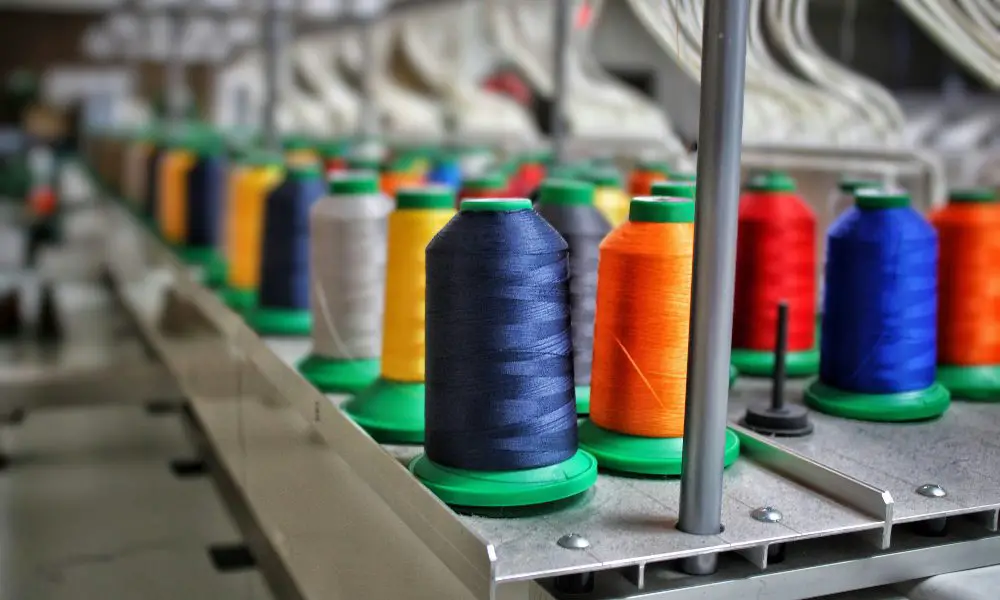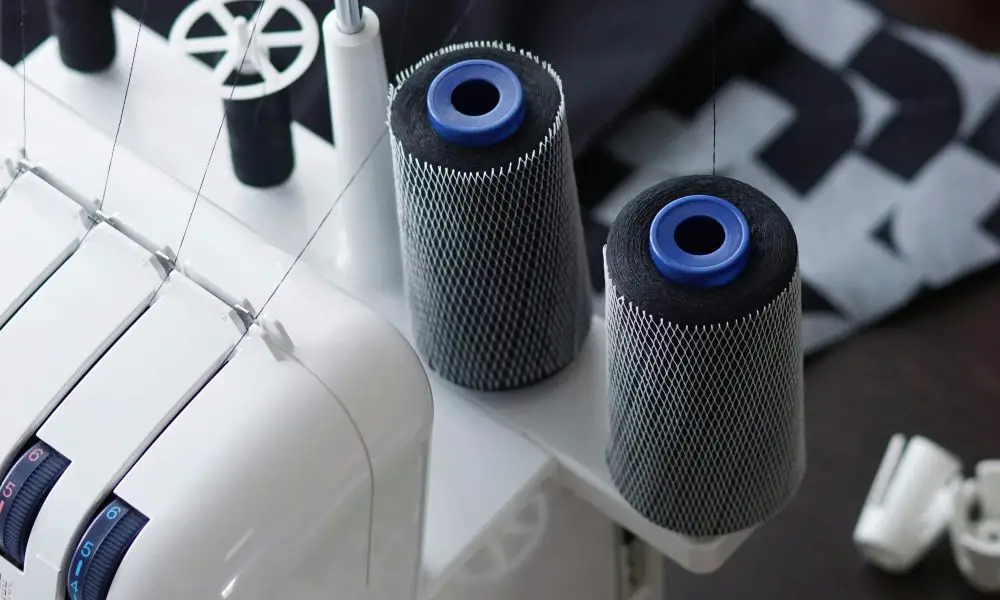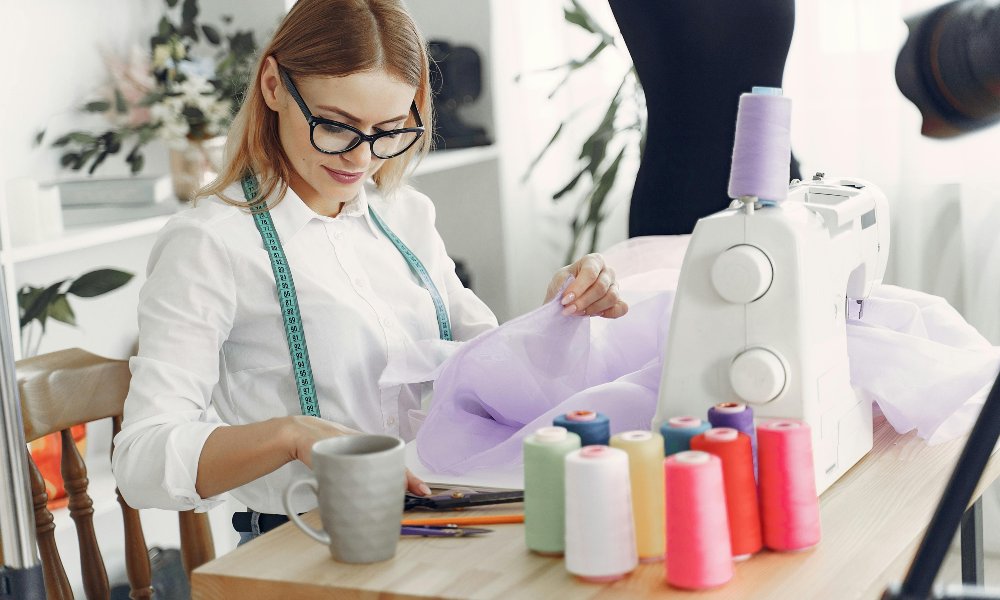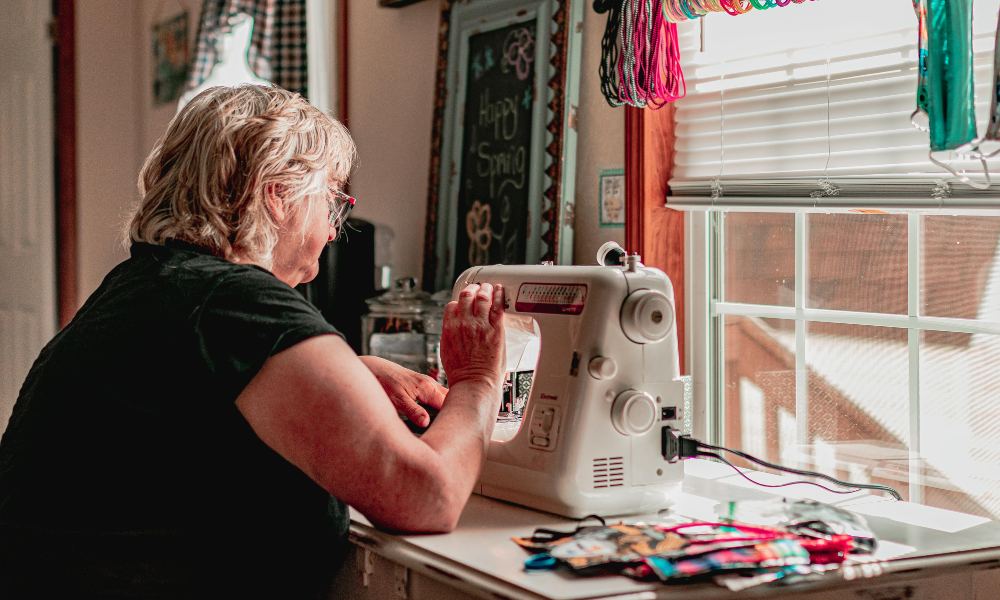Sewing with decorative embroidery thread can add beautiful detail to your projects. But can you use thicker, fancier embroidery thread in your regular sewing machine? Or will it cause chaos with skipped stitches, broken needles, and jams? Let’s unravel the mystery of sewing machine embroidery thread.
Have you ever wondered if you can use the same brilliantly hued embroidery floss for machine stitching as you do for hand embroidery? The short answer is yes, you can use embroidery thread in a standard sewing machine. However, the thread weight, composition, and machine setup can determine whether it’s a sewing dream or a disaster.
What Exactly is Embroidery Thread?
Before we get into the tricky task of sewing with it, let’s look at what makes embroidery thread different from regular sewing. Embroidery thread is a heavier-weight thread of many smaller strands twisted into a fluffy, bumpy construction. Common materials like rayon, polyester, cotton, and silk lend the thread sheen and luster perfect for decorative work.
Compared to the fine, smooth threads used for regular sewing, embroidery varieties seem gigantic. Their thicker profile is ideal for stitching ornamental designs by hand or machine that will stay visible in the fabric. However, this same bulk can easily overwhelm home sewing machines not calibrated for it.
Why Embroidery Thread Causes Headaches for Sewing Machines

Using heavyweight embroidery threads in your machine can wreak havoc in several frustrating ways:
- Needle Breakage: The thick thread can break needles that are not designed to handle the extra bulk.
- Skipped Stitches: Embroidery thread won’t neatly slide into the bobbin area, causing skipped stitches.
- Thread Jams: Lint and slubs on the floss can get stuck in tension discs and the other regions, making a knotty mess.
- Uneven Stitching: The embroidery thread can create loops on the underside and an uneven top stitch.
- No Tension: The loose, fluffy construction makes tension control impossible.
Embroidery thread is too big, too bumpy, and too unruly for delicate sewing machine parts designed for sewing thread. But that doesn’t mean you have to keep embroidery thread quarantined to handwork only! You can convince your sewing machine to play nice with embroidery floss with a few adjustments.
Handy Tips to Help Embroidery Thread and Sewing Machines Get Along
- Use an embroidery needle. The large eye and scarf help protect the thread and prevent shreds.
- Loosen the top thread tension. This helps the thread move smoothly without breaking.
- Try a unique stabilizer or thread net. These support the thread to prevent tangles and breakage.
- Slow down the sewing speed. Give the thread time to feed instead of racing through.
- Use a shorter stitch length. Tiny stitches mean less thread through at once, reducing strain.
- Test on fabric scraps first. Check tension, stitch formation, and performance before sewing your project.
Following those suggestions, you’ll have the best chance for sewing success with embroidery weight threads. And if it still isn’t cooperating, remember you can always finish on an embroidery machine instead!
Ideal Uses for Embroidery Thread in Sewing Machines
Even with adjustments, construction seams with embroidery thread will likely pucker and upstage the fabric. Limit machine embroidery thread to the appropriate decorative duties:
- Detailed free-motion embroidery – Enhance quilting with metallic cord
- Dimensional stitching – Blanket stitches pop with fuzzy pearl cotton
- Quilting accents – Echo intricate designs using 30wt cotton embroidery thread
- Applique – Attaching shapes with satin stitch shines with sheeny rayon
- Hems and embellishments – Add character by topstitching with polyester embroidery floss
- Monogramming – Metallic embroidery thread initials dazzle on jackets or towels
- Attaching trims – Secure lacy trims, ribbons, or cords with strong embroidery thread
When kept to ornamental tasks, machine embroidery thread performs like a pro. However, limitation is key to avoiding disasters.
Should You Use Embroidery Thread in Your Sewing Machine?
Learning the pros, cons, and troubleshooting tips helps determine if machine embroidering with thicker, fluffier threads suits your project. While challenging at times, the dazzling results can be worth the effort.
FAQs
Can I use embroidery thread in the bobbin of my sewing machine?
Using embroidery thread in the bobbin is not recommended. The thick thread can jam inside the bobbin case and prevent smooth stitch formation. Use regular sewing thread in the bobbin when sewing with embroidery thread on top.
What needle works best with embroidery thread on a sewing machine?
An embroidery needle is ideal since it has a giant eye and a deeper groove to protect the thicker thread from fraying. Try a size 90/14 embroidery needle as a starting point for most threads.
Should you hand wind bobbins when using embroidery thread?
Hand-winding bobbins allow better tension control than machine winding, which can wrap too tight. So, hand winding is recommended to prevent over-stressing embroidery thread.
Can you use twin needles with embroidery thread?
It’s best to avoid twin needles, as they add extra bulk, which can overwhelm machines. Stick to a single embroidery needle for smoother sailing with embroidery threads.
How do you set tension for embroidery thread?
Begin with a lower tension of around 3-4, then test on scrap fabric. Adjust tension until the top thread loops minimally to the bottom on the underside. The goal is light tension without overly tight or loose stitches.
Conclusion
Embroidery thread can work in regular sewing machines but only for decorative finishes. And be sure to thread carefully to prevent snarls and breakage!
What tips have helped you use embroidery thread successfully? Share your machine embroidery tricks in the comments below. Happy Stitching!
***
Main image: pexels.com




